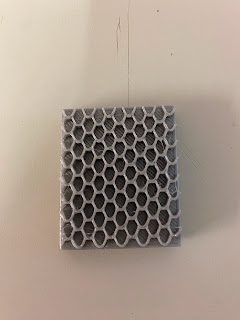Kate Whyles
Kate Whyles
Kate Whyles told us she lacked the confidence to show her own work, but she still collaborated with other artists, and ultimately decided to work as a curator of Fine Art.
One of the Artists she has worked with is Marc Quinn on 'The Complete Marbles'. These sculptures were made with traditional marble masons in Pietrasant Italy and were inspired by the Elgin Marbles at the British Museum and other classical statues such as this at the 'Venus de Milo' at the Louvre. They present images of people who have lost limbs due to accidents or born with a disability and aim to highlight the fact that the idea of an 'incomplete' body is not so celebrated and acceptable in real life as it is in the context of art history. They celebrate the imperfection and the beauty of different kinds of bodies as well as the strength and vitality of the human spirit.
Later, she rented her first gallery space and created 'This is Art' on Stoney Street. It was free to exhibit, so the gallery quickly filled up with artists looking to show and sell their art. Kate would also help them in this process if they wished, collecting a small commission fee. This helped her later on when she started to work as the curator of Castle Fine Art. It was at the time a very small family run business but has since grown into a huge company with shopfronts all over the country and selling art from thousands of well known artists and even celebrities.
She has represented many artists including; Lorenzo Quinn, Mackenzie Thorpe, Rolf Harris, Govinder Nazron, Eve Arnold and even Johny Depp. Hosting these artists also made her question why people bought art, was it because they loved it, the artist was famous, or as an investment for the future?
From these experiences she highlighted a few things we should consider when showing our work:
- Scale of exhibition - don't make a huge painting to be shown in a small room
- Length of exhibition (temporary / permanent) - will it degrade/fall apart?
- Mediums used - will it fade / degrade / stain the wall?
- Location - what sort of people will attend / could you work be considered offensive there?
- Transportation - how will you get the piece there?
- Collaborations - artists / assistants input
- Value of pieces - how to handle them / any protective measures (screens, ropes etc)?
- Promotion - will anyone know it's there without advertisements?
- Public engagement - what is it want to portray?
- Securement of funding - do you need any additional funds (grants / loans)?
- Deadlines - can you achieve everything you want to in the time?
She also mentioned how we have to be aware of where our art is placed. This applies more to sell than in galleries, but for example if being placed in a cafe or office or other similar setting, it needs to be 'commercial'. This means that it needs to be easily digestible and not offensive. You should also take into account if it can be reproduced. For example, if you are selling prints of a painting, then the texture of the paint of the canvas will not be able to be printed on a flat paper, so shouldn't be the main feature of the painting(e.g. impasto). Or if you wanted to mass produce it (e.g. on mugs or t-shirts) could you do this?








Comments
Post a Comment